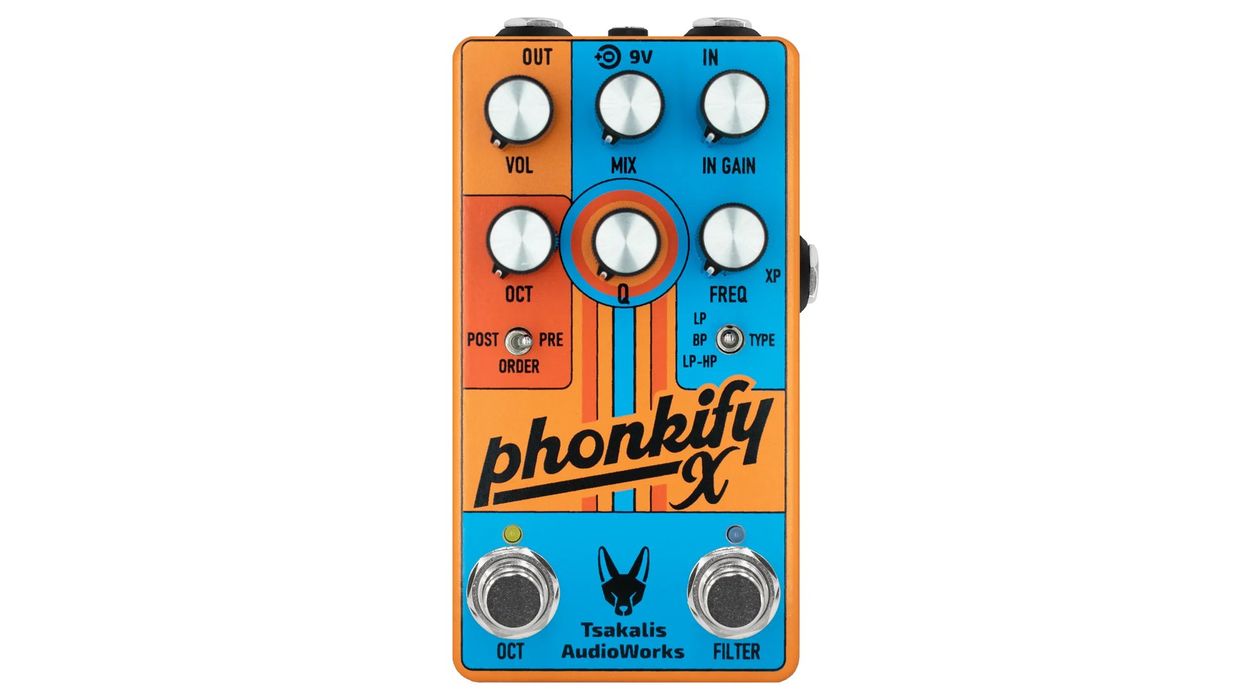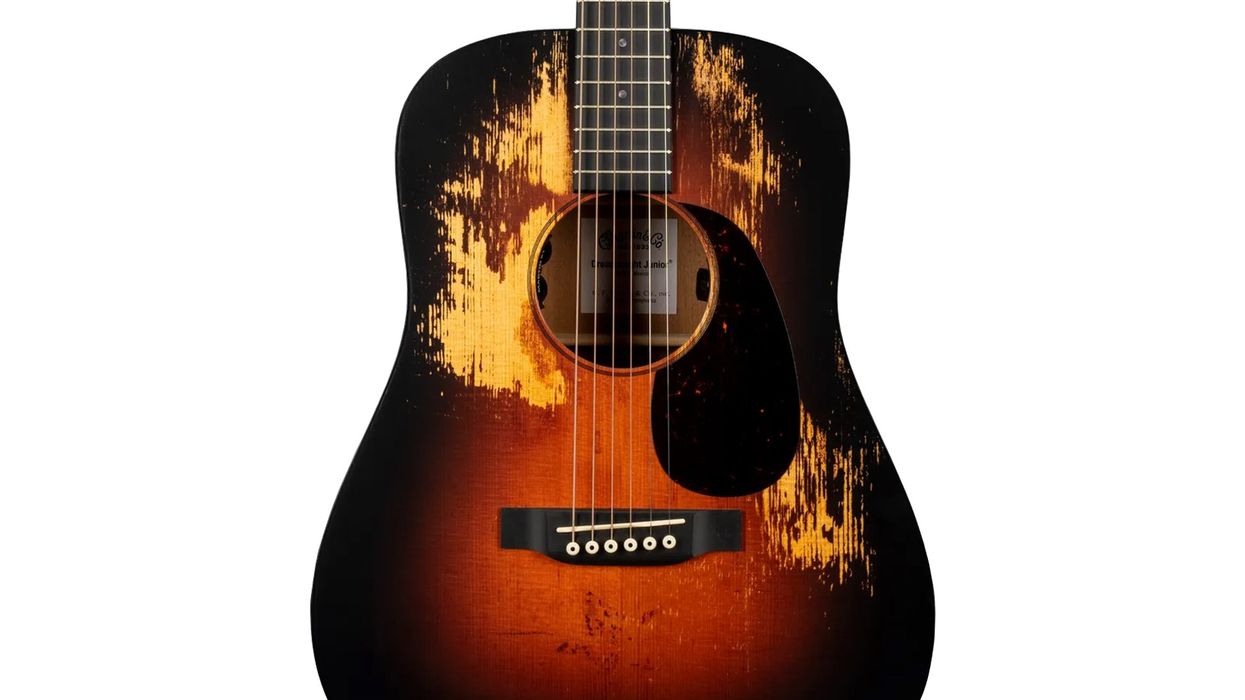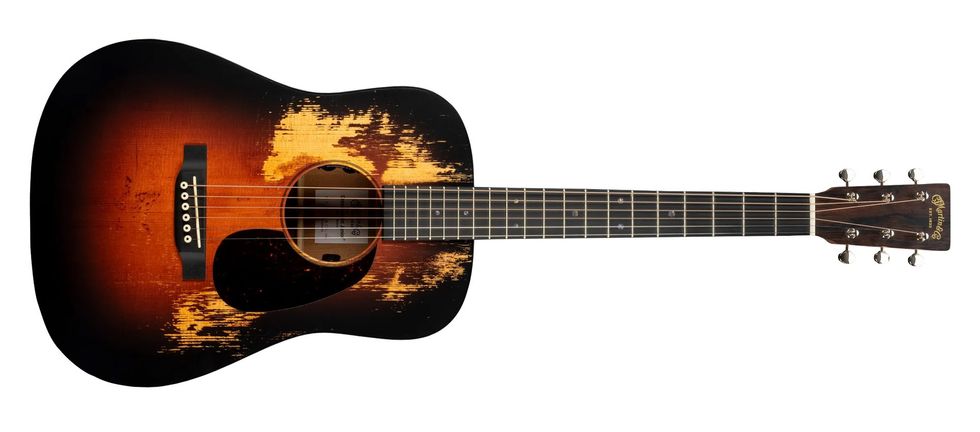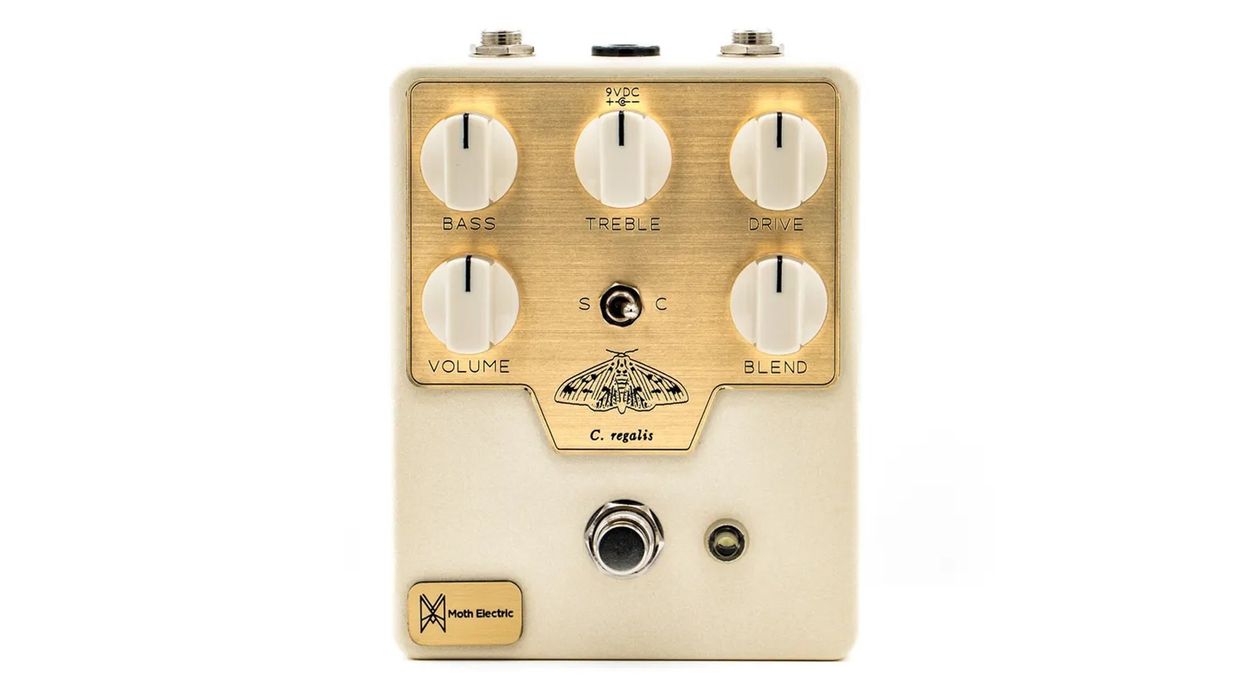While it’s not a stated part of their mission, Mojo Hand FX seems to prize simplicity in their pedals. Many Mojo Hand pedals that could be more complex to take advantage of digital processing possibilities are just three knobs and a push button. And while this isn’t the only layout the company utilizes, it’s employed effectively on pedals like the Deluxe Memory Man-inspired Dream Mender to distill a more complex analog stompbox to its essence. The Mojo Hand Swim Team, a digital chorus and flanger inspired by the Electro-Harmonix Polychorus, Echoflanger, and Small Clone, uses the same 3-knob layout to make summoning classic and powerful modulation sounds easy.
Wade in the Water
The Swim Team’s graphics are a clear homage to Nirvana’s Nevermind. Mojo Hand also sells a limited negative-image, black-and-white “bleached” edition (though Bleach, Nirvana’s first LP, is graced by little if any chorus or flange effects). While Kurt Cobain didn’t use a lot of pedals, he was no stranger to chorus and flange. They helped define the sound of Nevermind and In Utero, in particular, and Cobain used the EHX Small Clone, Polychorus, and Echoflanger at various points in his career. Heck, I’d wager a generation of guitarists were turned on to the effect from the opening notes of “Come as You Are” alone.
Mojo Hand FX Swim Team Review by premierguitar
- Chorus setting: Mix & Depth at 1 o'clock, variable Rate
- Flanger setting: Mix & Depth at 1 o'clock, variable Rate
The Swim Team uses just three basic controls: depth, rate, and mix/feedback. The latter changes duties depending on which effect is activated with the chorus/flanger button. It’s simpler than a Polychorus or Echoflanger (forgoing the “tune” knob, “filter matrix,” and “double track” modes on those pedals), but simpler than a Small Clone. Simplicity does have some drawbacks: If you plan to change between the two effects in a live situation, there’s no visual cue to reveal which effect is employed. The bypass LED, for instance, doesn’t change color.
The Swim Team uses just three basic controls: depth, rate, and mix/feedback. The latter changes duties depending on which effect is activated with the chorus/flanger button. It’s simpler than a Polychorus or Echoflanger (forgoing the “tune” knob, “filter matrix,” and “double track” modes on those pedals), but simpler than a Small Clone. Simplicity does have some drawbacks: If you plan to change between the two effects in a live situation, there’s no visual cue to reveal which effect is employed. The bypass LED, for instance, doesn’t change color.
Shallows and Depths
The first thing I had to do when I plugged the Swim Team in was fish around for those eerie Nirvana sounds. Plugged into a ’60s Fender Bassman with a ’90s MIJ Fender Jaguar, the quivering tones of “Come as You Are” were easy to summon with all of the knobs between 12 and 1 o’clock positions and the chorus engaged. And if you want to coax the tones of Kurt’s famous live “anti-solo” freakouts, maxing out the rate and depth and pairing the pedal with a ProCo RAT does an excellent job. I also spent a lot of time trying to capture the chaotic warble heard on live renditions of the “Heart Shaped Box” solo. And though there are a lot of ingredients in the tone soup of any live recording, I couldn’t quite summon the thickness of a vintage Polychorus with the Swim Team and RAT alone.
My favorite tones in the flanger department came around with the rate in 9 o’clock territory and depth at noon, which generates a subtle rise-and-fall texture that gives power chords extra glow and single notes a little extra magic. The output starts to get a little chattering-elves crazy once you roll the rate clockwise past 3 o’clock. But most rate settings remain practical and easy to adapt to an existing guitar tone throughout the knob’s sweep. Part of this agreeability in flange mode (which is generally a good thing) makes the Swim Team less suited for over-the-top flange. And if you’re after pitchy, high-frequency peaks and outlandish jet-whoosh, you might want to look to more radical options. That said, I found humbuckers deliver a deeper, richer whoosh from the flanger— especially with lower rate settings. So be sure to try Swim Team with your own rig to see how they match up.
The Verdict
Mojo Hand FX’s Swim Team sells for $159, which is a pretty fair price for the two rich modulation voices that approximate classic, sought-after sounds in stable digital platforms. Both effects sound great in the kind of relatively straight applications you hear in vintage recordings. And the chorus, in particular, is lush and spirited. The flanger covers the basics with ease, but I did miss some of the idiosyncrasies that can make flangers sound so radical and unique, like the metallic bark from an old bucket brigade Electric Mistress. Then again, vintage analog units can be quirky and unreliable. And even their newer BBD counterparts can be pretty expensive. Given that, this compact and streamlined multi-modulator merits praise for offering a design that cuts the extra fat and extra expense.


















